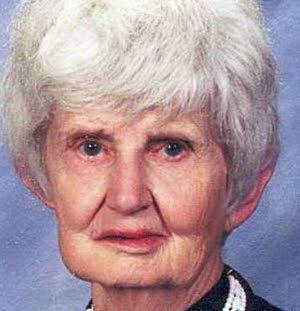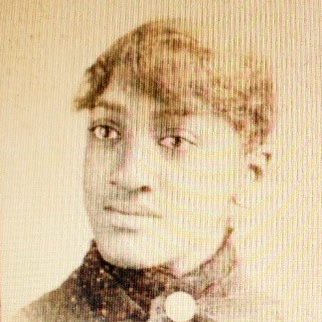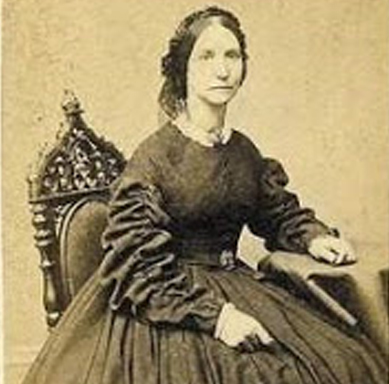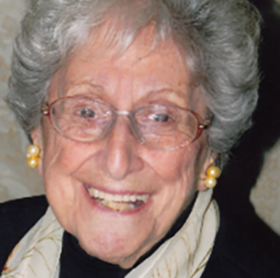A summer visitor to Mattapoisett, Huybertie Hamlin (1873-1964) enjoyed living in the little town but thought that life here could be even better. With her energy and enthusiasm, she persuaded many among the townspeople and summer residents to form the Mattapoisett Improvement Association. The municipal improvements and services that they initiated are still valued today.
Huybertie (Bertie) Lansing Proyn Hamlin (1873-1964) was born a socialite and became a philanthropist and civic activist. She was born in Albany, New York into a distinguished Dutch family and was raised with wealth, power, and high social standing. Huybertie chronicled throughout her life, in journals, newspaper articles and a book. In her autobiography of her youth, An Albany Girlhood, she told of visits from such elite as Grover Cleveland, the governor of New York who later went on to become a U.S. President. Her grandparents were sixth generation Dutch American. Her father was a state Senator and then a United States Representative, as well as a lawyer and railroad executive. Huybertie was quite familiar with prominent families such as the Roosevelts because of her home town (Albany), her family being “traditional nineteenth-century Democrats” and their association with other esteemed Dutch families.
She summered several years in Newport, RI, made her debut as a debutante in 1891 and was subsequently presented to Queen Victoria on May 4, 1892. On a family visit to Washington, D.C. she met her future husband Charles Hamlin. As he was 11 years older, she was not inclined to take him seriously. He was a persistent suitor and with a bit of persuasion from her mother she agreed to the engagement. In 1898 she married Charles Sumner Hamlin, an expert in trade and monetary matters who would later become the first chairman of the Federal Reserve. Two years later they made their first start at Mattapoisett, “beginning a love affair between these two people and the small village on Buzzards Bay that would continue, literally, ‘for richer, for poorer,’ for sixty-five years.”
Members of the Hamlin family summered in neighboring Marion but Charles and Bertie preferred Mattapoisett. On their first glimpse of the house next to the Ned’s Point Lighthouse they saw a dwelling that badly needed repairs and was, in fact, locked up. They had to climb in a back window to see the interior. She described the interior as she found it when they finally got inside, “In the dining room the dreary brown paper hung in strips. It was a dark room – two windows looking over the water and a large blank wall between them.” They realized the potential as a great place to relax and for entertaining guests with its location on the harbor. They bought the property and began fixing it up to their standards. Charles had long wanted to have a “farm” and Bertie thought of a great way to get the animals they wanted. It is also a great illustration of her keen wit and sense of humor. “We asked each one of our family members to donate an animal. We would honor the donors by naming the animal for them. If nothing was forthcoming – we would name one of our pigs for them.”
The Hamlins were summer residents but made Mattapoisett their permanent voting residence. They spent long periods each year in town and “took an extensive part in year-round life of the town.” Bertie entered village life very enthusiastically. Summer residents were, for the most part, quite wealthy and were used to doing philanthropic works for their local cities. After spending some time in Mattapoisett, she and other like-minded folks realized that there were things that they could accomplish with organization. She almost singlehandedly founded the Mattapoisett Improvement Association and was its first and longest-lasting president. This organization was composed of both summer and year- round volunteer members who paid a membership fee. The Association organized the first regular trash and garbage collection, caring for the town beach, watering unpaved streets, cleaning main streets and planting more than 400 trees. It inaugurated visiting nurse service and a dental clinic for children. The Association was responsible for ensuring that an empty spot on Main Street was not turned into a coal bin but was instead turned into a waterfront public park, known today as Shipyard Park. These were major achievements for a small town and could not have been undertaken without the “push” from these civic-minded folks. On the 50th anniversary of the town’s founding after separating from Rochester in 1857, Huybertie wrote in 1907, “When we invested in hitching posts and watering troughs for the horses we had no vision of the motor age just ahead. We lived by candles and oil lamps when this association was founded in 1904.”
The life of Mattapoisett for the summer residents was relaxed and busy at the same time. Most of the visitors knew each other or of each other through various family or professional associations. The Hamlins hosted too many distinguished acquaintances to list but included the likes of Justice Oliver Wendell Holmes and his wife, Japanese ambassador Viscount Ishii and his wife, and “their most prominent houseguest” was Mrs. Woodrow Wilson. There were concerts, talks, visits from other family members and lively dinners at which Bertie loved to play her practical jokes – dribble glasses, unstable silverware, etc. Her husband, being rather a more somber person, obviously got a kick out of her activities, because it was a constant factor at her parties. Bertie truly enjoyed her life here and wrote extensively of her experience in what she called “The Mattapoisett Chronicles.” She wrote, variously, of persuading her lifelong friend Franklin Delano Roosevelt to visit for a large dinner after he had become afflicted with polio. All who attended were amazed at how well he handled his condition. Another time, during the opening of the Cape Cod Canal, the presidential yacht made a special visit into Mattapoisett Harbor and a celebration followed. A funny, but quite probably true, story is that one night at home (during Prohibition) Bertie heard some strange sounds outside on the harbor. She called the police to report the incident. She was told “Madam, I suggest you close your curtains and ignore the noise.” It seems that the new caretaker she had hired was one of New Bedford’s most notorious rumrunners and he was using his new location on the water as cover for his business!
In 1888, The Mattapoisett Casino, a summer social gathering place where casual meetings, tennis and other summer activities were scheduled, opened. It was a private club for these summer folks. Her observations on her fellow visitors were recorded in “The Mattapoisett Chronicles.” One of the best stories is her observation of one Mr. Robert Atkinson. “For two summers Mr. Robert Atkinson played for the Saturday night dances at the Casino. He was himself a five-piece orchestra. He played the piano, he hit a triangle, he kicked a drum and he had a noisy accomplaniment [sic] on his nose and something he blew with his mouth. He could not keep time so instead of dancing everyone crowded at the windows to watch the orchestra.” Bertie’s sense of humor, love of pranks and her interest in town affairs kept her entertaining folks for many years.
The Hamlins had one daughter, Anna, born soon after arriving in Mattapoisett in 1900. She suffered with poor health and died in her 20s. This cast a pall over their lives for quite some time. They started travelling more but eventually came back to Mattapoisett. Her husband Charles died in the spring of 1938.
Huybertie stayed at Mattapoisett for many years. She kept her hand in political matters throughout her time in Mattapoisett. She attended meetings and luncheons of the New Bedford Women’s Democratic Club. She continued to give a political tea each fall at Ned’s Point in observance of “National Democratic Women’s Day.” Later in life her health and wealth were both diminished, making life at Mattapoisett untenable any longer, so she returned to Albany for her final years. The town of Mattapoisett is still indebted to her for her foresight in establishing the Mattapoisett Improvement Association and all the enthusiastic endeavors the association undertook. Huybertie died on March 6, 1964 at the age of 90 and is buried next to her husband at Forest Hills Cemetery in Jamaica Plain, Massachusetts.
Maureen McCarthy with Penny Cole
Information from
-
Hamlin, Huybertie. “The Mattapoisett Chronicles.”
-
Wood, Edward F. R. Old Mattapoisett: A Summer Portrait. Quadequina, 1995.
![[Huybertie Hamlin], c. 1900, Painting by Charlotte Burt Kirkham, Courtesy of / Albany Institute of History & Art Painting of Huybertie Hamlin](https://historicwomensouthcoast.org/wp-content/uploads/2018/05/Hybertie-Hamlin-960x960.jpeg)




